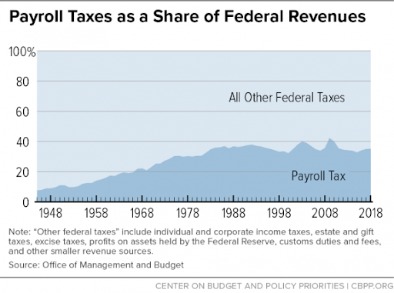
Create closing entries to reflect when your accounting period ends. For example, if your accounting periods last one month, use month-end closing entries. Whatever accounting period you select, make sure to be consistent and not jump between frequencies. The general journal is used to record various types of accounting entries, including closing entries at the end of an accounting period. Closing entries are completed at the end of each accounting period after your adjusted trial balance has been run.
Now Paul must close the income summary account to retained earnings in the next step of the closing entries. All temporary accounts must be reset to zero at the end of the accounting period. To do this, their balances are emptied into the income summary account. The income summary account then transfers the net balance of all the temporary accounts to retained earnings, which is a permanent account on the balance sheet. Companies use closing entries to reset the balances of temporary accounts − accounts that show balances over a single accounting period − to zero. By doing so, the company moves these balances into permanent accounts on the balance sheet.
Step 2 of 3
Are the value of your assets and liabilities now zero because of the start of a new year? Your car, electronics, and furniture did not suddenly lose all their value, and unfortunately, you still have outstanding debt. Therefore, these accounts still have a balance in the new year, because they are not closed, and the balances are carried forward from December 31 to January 1 to start the new annual accounting period. Income summary effectively collects NI for the period and distributes the amount to be retained into retained earnings. Balances from temporary accounts are shifted to the income summary account first to leave an audit trail for accountants to follow. Income summary is a holding account used to aggregate all income accounts except for dividend expenses.

Notice that the balances in interest revenue and service revenue are now zero and are ready to accumulate revenues in the next period. The Income Summary account has a credit balance of $10,240 (the revenue sum). Our discussion here begins with journalizing and posting the closing entries (Figure 1.26). These posted entries will then translate into a post-closing trial balance, which is a trial balance that is prepared after all of the closing entries have been recorded. The $9,000 of expenses generated through the accounting period will be shifted from the income summary to the expense account. In this example, the business will have made $10,000 in revenue over the accounting period.
What Are Income Statement Accounts?
Answer the following questions on closing entries and rate your confidence to check your answer. We have completed the first two columns and now we have the final column which represents the closing (or archive) process. The third entry requires Income Summary to close to the Retained Earnings account. To get a zero balance in the Income Summary account, there are guidelines to consider. All accounts can be classified as either permanent (real) or temporary (nominal) the following Figure 1.27. It’s vital in business to keep a detailed record of your accounts.
- Permanent accounts are accounts that show the long-standing financial position of a company.
- This reflects your net income for the month, and increases your capital account by $250.
- The income summary is used to transfer the balances of temporary accounts to retained earnings, which is a permanent account on the balance sheet.
- A temporary account accumulates balances for a single accounting period, whereas a permanent account stores balances over multiple periods.
In other words, the temporary accounts are closed or reset at the end of the year. Closing entries are journal entries used to empty temporary accounts at the end of a reporting period and transfer their balances into permanent accounts. Temporary accounts are used to accumulate income statement activity during a reporting period. The use of closing entries resets the temporary accounts to begin accumulating new transactions in the next period.
Closing Entry for Revenue Account
As mentioned earlier, this is just an intermediate account that is used to zero out all the other revenues and expenses accounts into one place. The balances of the income summary account will eventually also be transferred to the retained earnings account on the balance sheet. A closing entry is a journal entry that is made at the end of an accounting period to transfer balances from a temporary account to a permanent account. After closing both income and revenue accounts, the income summary account is also closed. All generated revenue of a period is transferred to retained earnings so that it is stored there for business use whenever needed.
If the company decides not to use an income summary account, it would substitute the retained earnings account for the income summary account, and finish this part of the closing process. Finally, you are ready to close the income summary account and transfer the funds to the retained earnings account. The trial balance is like a snapshot of your business’s financial health at a specific moment.
How much are you saving for retirement each month?
If your revenues are less than your expenses, you must credit your income summary account and debit your retained earnings account. Without closing revenue accounts, you wouldn’t be able to compare how much your business earns each period because the amount would build up. And without closing expense accounts, you couldn’t compare your business expenses from period to period.
- This means that the closing entry will entail debiting income summary and crediting retained earnings.
- However, the cash balances, as well as the other balance sheet accounts, are carried over from the end of a current period to the beginning of the next period.
- Temporary account balances can either be shifted directly to the retained earnings account or to an intermediate account known as the income summary account beforehand.
- Closing entries are manual journal entries at the end of an accounting cycle to close out all the temporary accounts and shift their balances to permanent accounts.
The remaining balance in Retained Earnings is $4,565 the following Figure 5.6. This is the same figure found on the statement of retained earnings. The eighth step in the accounting cycle is preparing closing entries, which includes journalizing and posting the entries to the ledger.
The second part is the date of record that determines who receives the dividends, and the third part is the date of payment, which is the date that payments are made. Printing Plus has $100 of dividends accounting community forum with a debit balance on the adjusted trial balance. The closing entry will credit Dividends and debit Retained Earnings. The next step is to repeat the same process for your business’s expenses.
Form 424B2 JPMORGAN CHASE & CO – StreetInsider.com
Form 424B2 JPMORGAN CHASE & CO.
Posted: Thu, 31 Aug 2023 19:05:51 GMT [source]
You need to use closing entries to reduce the value of your temporary accounts to zero. That way, your next accounting period does not have a balance in your revenue or expense account from the previous period. All the temporary accounts, including revenue, expense, and dividends, have been reset to zero. The balances from these temporary accounts have been transferred to the permanent account, retained earnings. This process ensures that your temporary accounts are properly closed out sequentially, and the relevant balances are transferred to the income summary and ultimately to the retained earnings account. Whether you’re posting entries manually or using accounting software, all revenue and expenses for each accounting period are stored in temporary accounts such as revenue and expenses.
Credit Risk Management Software
In other words, temporary accounts are reset for the recording of transactions for the next accounting period. By doing so, companies move the temporary account balances to the permanent accounts of the balance sheet. Since sales and revenue accounts have a credit balance, these accounts are closed by debiting the sales and revenue accounts, and crediting the income summary account. Similarly, closing entries are made to the expense accounts by crediting each expense account, and debiting the income summary account. To determine what closing entries need to be made, an accountant needs to run a trial balance and from it obtain the information necessary to prepare the closing entries. Closing entries, also called closing journal entries, are entries made at the end of an accounting period to zero out all temporary accounts and transfer their balances to permanent accounts.
